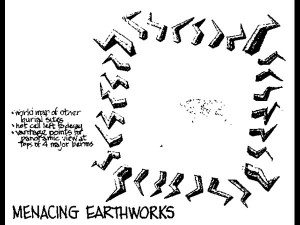Reading Umberto Eco’s The Search for the Perfect Language I came across a discussion Thomas Sebeok’s work for the U.S. Office of Nuclear Waste Management on “Communication Measures To Bridge Ten Millennia.” Sebeok was commissioned to figure out how to warn people about nuclear waste in 10,000 years. How do you design a warning system that can survive for tens of thousands of years? He proposed an artificial folklore with a priestly caste to maintain superstitions about the site. He ended up recommending
that information be launched and artificially passed on into the short-term and long-term future with the sup- plementary aid of folkloristic devices, in particular a combination of an artificially created and nurtured ritual-and-legend. …
The legend-and-ritual, as now envisaged, would be tantamount to laying a “false trail”, meaning that the uninitiated will be steered away from the hazardous site for reasons other than the scientific knowledge of the possibility of radiation and its implications; essentially, the reason would be accumulated superstition to shun a certain area permanently. (p. 24)
Slate Magazine has a great story on the issue of Atomic Priesthoods, Thorn Landscapes, and Munchian Pictograms: How to communicate the dangers of nuclear waste to future civilizations by Juliet Lapidos (Nov. 16, 2009.) She surveys some of the interesting ideas like “Menacing Earthworks” that would warn people off, and talks about a 1993 SANDIA report titled, “Expert Judgment on Markers To Deter Inadvertent Human Intrusion Into the Waste Isolation Pilot Plant.”
